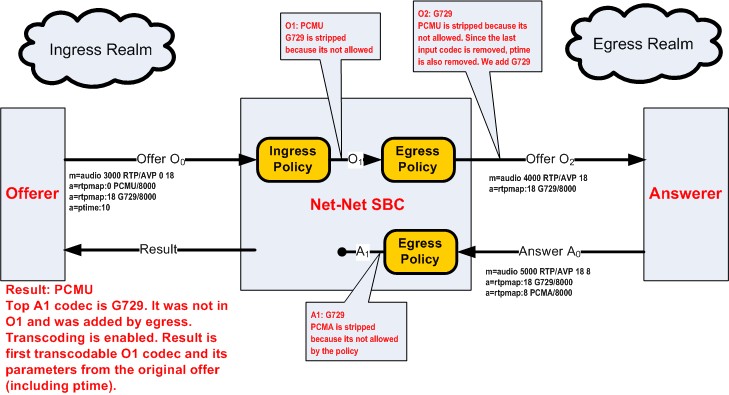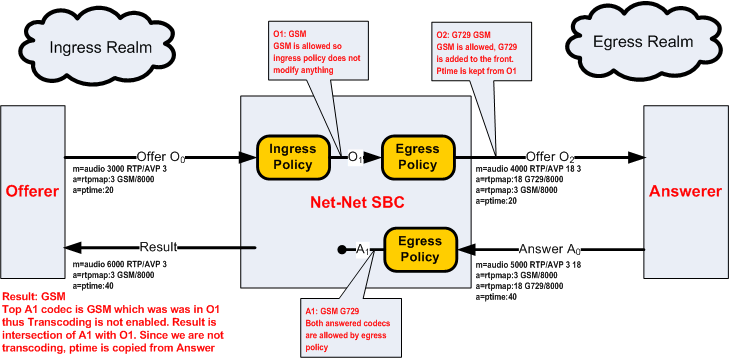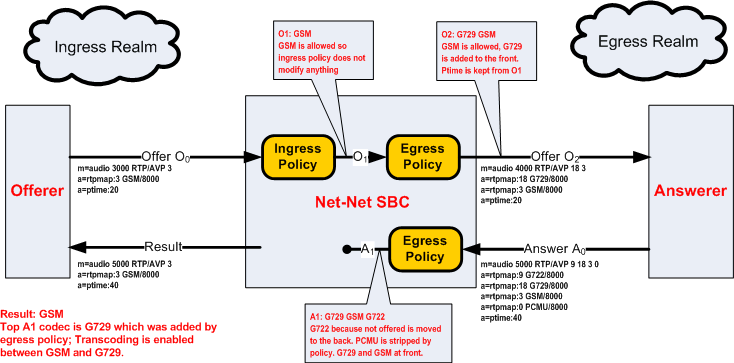Voice Scenario 1
The following ingress and egress policies are used for scenario 1.
| Ingress Policy | Egress Policy | ||
|---|---|---|---|
| allow-codecs | PCMU GSM | allow-codecs | G729 GSM G722 |
| add-codecs-on-egress | PCMU | add-codecs-on-egress | G729 |
| order-codecs | order-codecs | ||
| force-ptime | disabled | force-ptime | disabled |
| packetization-time | packetization-time | ||
Note:
The codec in the ingress policy’s add-codecs-on-egress parameter has no effect in the following examples. Its presence would have an effect if a reINVITE was initiated from egress realm, effectively reversing the roles of the codec policies.







